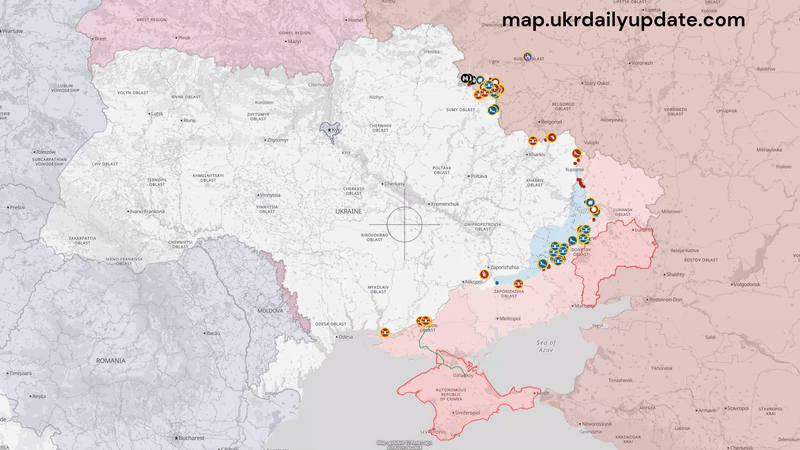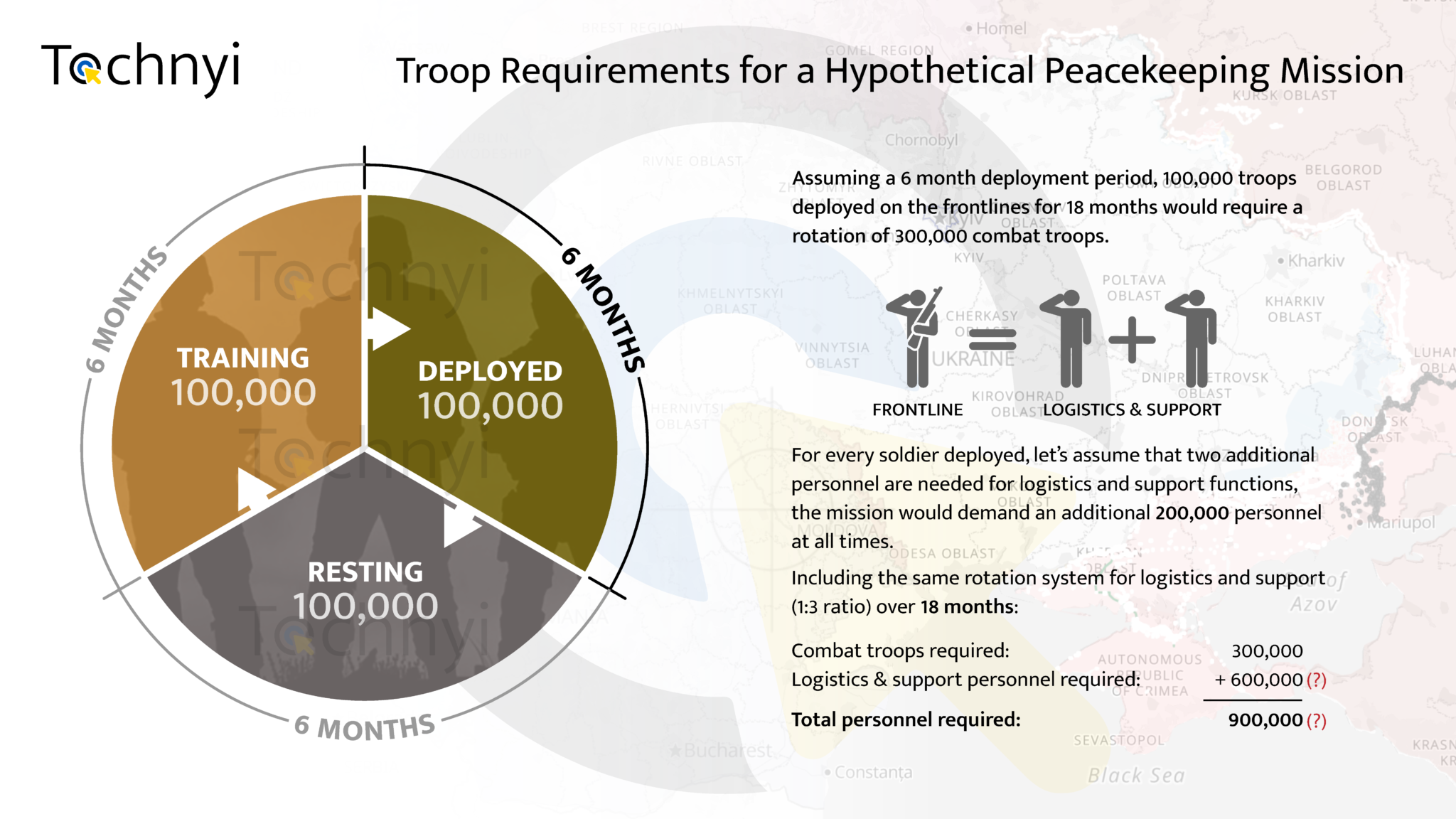The Strategic Context
Recent policy shifts from the United States suggest a potential decrease in support for Ukraine. Moreover, a swift move in diplomatic efforts to put an end to the Russian war in Ukraine by undercutting Ukraine and European allies has shook the European continent during the last week. As the US is now negotiating directly with Russia without European involvement, the risk of an outcome which sees a considerably weakened Ukraine, coupled with substantially increased security threats to European security, is high.
The Dangers of a Forced Ceasefire
A ceasefire at this stage would likely result in a frozen conflict rather than a genuine resolution. Analysts warn:
History has shown that Russia uses ceasefires to strengthen its position before launching further offensives.1 A pause in hostilities would allow Moscow to rebuild its military, replenish stockpiles, and refine its strategies for future aggression on the European continent. In the event of a forced peace agreement that concedes Ukrainian territory to Russia, this would legitimize Russia’s continued aggression and set a dangerous precedent for future conflicts. If Ukraine is abandoned by a ‘Coalition of the willing’ in its legitimate defense against Russian attacks, Eastern European countries—particularly the Baltics and Poland—may question NATO’s reliability, potentially leading to shifts in their defense policies. If Russia perceives Western resolve as weak, it could be incentivized to escalate military actions against additional neighboring countries, particularly in Eastern Europe. There is historical precedence to this pattern with the dissolution of the Soviet Union; Chechnya, Georgia, Ukraine 2014 and 2022.
The Short-Term and Long-Term Russian Threat
While some suggest that Russia needs five years to rearm, experts argue that a renewed Russian offensive could happen much sooner—potentially within 1-2 years.2
As it stands, the Russian army is planning to expand from 900,000 soldiers pre-war to 1.5 million by 20263, with multiple new formations and units being created, notably a new branch focused on UAV employment. The Russian armed forces commitment to the war in Ukraine is the only factor which inhibits a comprehensive training and equipping of the estimated 30,000 to 40,000 new recruits enrolled every month since 2023.4
Even if post-war fatigue or economic slow-downs could intervene to limit the scope of this build-up, Moscow does not need to rebuild to full pre-war strength to pose a serious threat. Instead, Russia can leverage hybrid warfare, political destabilization, and military coercion to achieve its objectives. It would retain the benefit of three years of combat experience; gained in the most brutal high-intensity conflict that Europe has witnessed since the end of World War II. Already, its ways of waging war – in terms of doctrine, force structure and operational methods – are getting noticeably more sophisticated. The destabilizing and coercitive potential of this emerging new Russian army shouldn’t be underestimated.
The Danish Defense Intelligence Service (FE) supports this assessment in its latest report, emphasizing that Russia could regain offensive capability within a much shorter timeframe. According to FE:
- In approximately 6 months, Russia could be capable of waging a localized war in a neighboring country.
- In approximately 2 years, Russia could pose a credible threat to NATO members and be ready for a regional war in the Baltic region.
- In approximately 5 years, Russia could prepare for a large-scale war in Europe, with the U.S. not taking sides.5
This assessment underscores the urgent need for Western nations to maintain military support for Ukraine and bolster their own defense capabilities. A forced ceasefire would allow Russia to reallocate significant military resources, increasing the likelihood of future conflicts in Eastern Europe and beyond.
The Importance of Deterrence
To prevent further Russian aggression, European allies must:
- Strengthen NATO’s Forward Defense: This means ensuring that no NATO territory is compromised, reinforcing military presence in Eastern Europe, and increasing readiness.
- Increase and commit to Long-Term Support for Ukraine: Providing Ukraine with sustained military aid, advanced weapons systems, and logistical support is essential to counter Russian advances.
- Deploy European Forces in Ukraine: Some analysts suggest that stationing European forces in Ukraine—even in non-combat roles—would send a strong deterrent signal to Moscow.
- Expand European Military Production: Europe must scale up defense manufacturing to meet the growing security demands and prepare for long-term challenges.
The Feasibility of a European-Led Peacekeeping Mission
There have been proposals about deploying a European-led peacekeeping force in Ukraine.6 However, such a mission would be logistically complex and politically contentious.
How large would such a force need to be?
President Volodymyr Zelenskyy has insisted on the necessity of deploying at least 200,000 European peacekeepers to prevent further Russian aggression against Ukraine following a ceasefire agreement. Other numbers range from 30,000 to 120,000 soldiers stationed along the frontlines to both observe and pose as a security guarantee and deterrence against further Russian attacks. The frontline in Ukraine stretches for more than 1200 km from Kherson in the south to Kharkiv in the north-east. In addition, there is the more than 1000 km of border between Ukraine and Russia/Belarus without active fighting which will need a significant military presence. A peacekeeping force, whilst posing as a security guarantee for Ukraine, would have to simultaneously work as a tripwire in the event of any renewed Russian aggressive actions against Ukraine. In that case, they would have to be deployed at a particular density along the frontlines to ensure this capability. Ukraine will also have to leave a significant force of its military on the frontlines in the short to medium term.

The animation above shows geolocations of events over a period of seven days. Yet, this is only a tiny fraction of the daily hostilities along the long stretching frontlines. In the event of a resumption of hostilities following any ceasefire, having smaller QRF forces in the rear would not be sufficient to cover the frontlines adequately: and therefore be unable to offer the security guarantees for Ukraine which would be required.
We will use 100,000 as an example, as we believe anything less will not fulfil needed requirements.
Due to military rotation cycles, in this case the total personnel requirement for frontline troops would likely exceed 300,000 over 1.5 years. 7
(see graphic below)

Europe likely will not be able nor willing to amass the needed troops
For a multinational force to be effective at performing peacekeeping tasks and deterring Russia from resuming offensive actions, it would have to be stationed along the current frontlines in Ukraine and it would have to be able to convincingly defend against any future aggression. This would carry a significant security risk. Several scenarios could lead to peacekeepers being injured or killed. Russian forces might attack peacekeepers, either due to misunderstandings or intentional provocations—this is assessed as likely. Additionally, peacekeepers could be harmed by unexploded ordnance or landmines, an outcome that is assessed as almost certain. This scenario brings the risk of escalation to a direct war between NATO allies and Russia to a higher level than ever before.This may lead to reluctance amongst many European nations to commit troops for extended periods, especially if casualties mount or the mission becomes politically unpopular. A peacekeeping mission in Ukraine would likely last decades, not years.
The U.S. Role and the Nuclear Deterrence Question
Recent statements from U.S. officials indicate that NATO membership for Ukraine is not a guaranteed outcome, which weakens deterrence against Russian aggression. If the U.S. withdraws its nuclear umbrella from Europe, nations may need to consider alternative deterrence strategies:
- Expansion of French and British Nuclear Capabilities: European nuclear powers could extend their deterrent over NATO’s eastern flank.
- Potential European Nuclear Armament: Some experts discuss the feasibility of European nations developing their own nuclear deterrents, though this would come with legal and diplomatic challenges.
- Russia’s Preemptive Strikes: There is concern that if European states attempt to acquire nuclear weapons, Russia could justify preemptive strikes, citing international non-proliferation norms.
Escalate to de-escalate
The scenario we have explored here poses severe risks of escalation to a direct armed confrontation between European NATO allies and the Russian Federation. Undoubtedly, the risks of this would be significantly higher than any that we have seen since the start of the full scale invasion in 2022. European politicians need to seek alternatives which will favour Ukraine and European security in the long run; alternatives that may pose a higher degree of risk than what they have been willing to take until now. European military presence in Ukraine should not be disregarded as a whole as it has thus far -but encouraged and actively pursued as policy.
One of Ukraine’s most pressing needs is its capacity to train and exercise new recruits, in addition to equipping them with the bare minimum they require for frontline operations. A deployment in western Ukraine, focused on the training and instruction of Ukrainian soldiers, would certainly come with some risks but would carry a risk farless than a peacekeeping mission. This would bolster Ukrainian morale and demonstrate resolve in our support for Ukraine. Russia will likely perceive this as a sign we truly will be supporting Ukraine as long as it takes, and it may change their calculation towards a more positive direction for Ukraine and Europe.
The war must not end like this
A forced ceasefire in Ukraine would not bring peace but rather pave the way for further conflict and increased European insecurity. To prevent Russian expansionism, the West must remain steadfast in supporting Ukraine and rapidly increase its own military and economic support, strengthening European NATO allies deterrence capabilities and ensuring Ukraine emerges from this war with its sovereignty intact. Failing to do so risks not just Ukraine’s survival but the long-term stability of Europe and the rules-based international order.
- Chechnya: The Turning Point That Wasn’t – https://www.rferl.org/a/1076423.html
↩︎ - Fabian Hoffman for CEPA, Preparing for the Worst — European NATO and a US Departure – https://cepa.org/article/preparing-for-the-worst-european-nato-and-a-us-departure/
↩︎ - Estonian Foreign Intelligence Service, “International Security And Estonia 2025”, 20 December 2024. https://www.valisluureamet.ee/doc/raport/2025-en.pdf ↩︎
- Mathieu Boulègue, Justin Bronk, Karolina Hird, Jaclyn Kerr, “Assessing Russian plans for military regeneration”, Chatham House, Research Paper, july 2024. https://www.chathamhouse.org/2024/07/assessing-russian-plans-military-regeneration
↩︎ - “Opdateret vurdering af truslen fra Rusland mod Rigsfællesskabet”- https://www.fe-ddis.dk/globalassets/fe/dokumenter/2025/trusselsvurderinger/-20250209_opdateret_vurdering_af_truslen_fra_rusland_mod–.pdf ↩︎
- Opening Remarks by Secretary of Defense Pete Hegseth at Ukraine Defense Contact Group (As Delivered) – https://www.defense.gov/News/Speeches/Speech/Article/4064113/opening-remarks-by-secretary-of-defense-pete-hegseth-at-ukraine-defense-contact/ ↩︎
- https://www.theguardian.com/business/2025/jan/21/zelensky-says-russia-ukraine-peace-deal-would-require-200000-allied-troops ↩︎